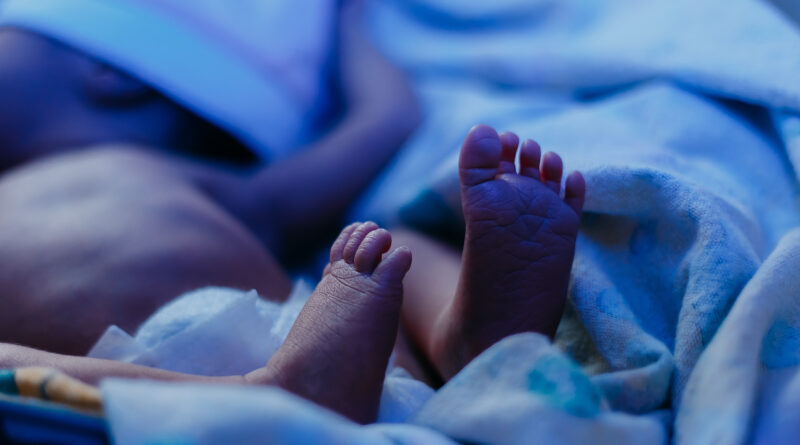Webinar: Hyperbilirubinemia in the Newborn
Hyperbilirubinemia affects approximately 60% of full-term neonates and up to 80% of preterm neonates. It occurs when there is an excess of bilirubin in a newborn’s blood. Bilirubin can accumulate in the baby’s blood, tissues, and body fluids, leading to a yellow discoloration of the skin, eyes, and other tissues — a condition known as jaundice.
While often a normal and temporary condition, hyperbilirubinemia requires careful monitoring to prevent potential complications, especially in premature infants, who are at higher risk.
Registered Nurses in the Welcome Baby program meet with families during the postpartum period and can educate parents about hyperbilirubinemia, helping them recognize signs of jaundice and understand when to seek medical attention.
In an LA Best Babies Network-hosted webinar (see recording from May 28, 2025, below) — for Registered Nurses and other staff of our network’s home visiting organizations and Welcome Baby hospitals — Sherri Garber Mendelson, Registered Nurse, discusses:
- Identification and diagnosis of hyperbilirubinemia
- At least three risk factors for hyperbilirubinemia
- Two legal issues in caring for infants with elevated bilirubin levels
- Three modes for treatment of hyperbilirubinemia including risks and benefits
- Differences between kernicterus and bilirubin encephalopathy
- Educational plans for families with a newborn with elevated bilirubin levels
Due to the risk of neurotoxicity, all infants must receive an objective bilirubin assessment within 48 hours of birth. A visual assessment alone can be unreliable, especially with varying skin pigmentation.
Signs of hyperbilirubinemia may include progressive yellowing of the skin and eyes, along with symptoms like excessive sleepiness and poor feeding.
Risk factors for hyperbilirubinemia include:
- Hepatitis, galactosemia, biliary atresia or sepsis cause an abnormality of excretion or reabsorption of bilirubin
- Blood incompatibility, lack of enzymes or antibodies against the baby’s own red blood cells can create a rapid rise in bilirubin level
- Prematurity
- Maternal diabetes
- Asian, Native American, Hispanic, Eskimo ancestry
- Sibling with neonatal jaundice, phototherapy or exchange transfusion
- Delayed meconium passage
- Poor breastfeeding
- Weight loss greater than 10%
Severe hyperbilirubinemia can lead to kernicterus, a form of brain damage that may cause movement disorders like cerebral palsy and hearing loss. Providing informed guidance on managing hyperbilirubinemia, including when to start preventive treatment, is essential to reduce the risk of neurodevelopmental complications.
Hyperbilirubinemia treatment includes:
- Phototherapy: a special fluorescent light that is effective in breaking down bilirubin without the process of conjugation
- Exchange transfusion: treatment of last resort for bilirubin levels that poorly respond to phototherapy or rise to dangerously high levels
Watch the webinar recording here, and don’t miss the links to related resources below:
About the presenter:
Sherri Garber Mendelson, PhD, RNC-OB; NIC; EFM; CNS, IBCLC, FAWHONN has been a Registered Nurse for 47 years and a Lactation Consultant for over 29 years. Throughout that time, she has been grateful for the opportunity to promote health for many people across the United States and in other countries. She currently teaches the Comprehensive Lactation Education Training (CLET) II course at California State University, Northridge (CSUN). In addition, she serves on the leadership team for the Association of Women’s Health, Obstetric and Neonatal Nurses (AWHONN) California, on the Research Committee for AWHONN National, and as President of the Board of Directors for PAC/LAC, a nonprofit organization dedicated to promoting health for mothers and babies. As a researcher and educator, she has worked to influence the next generation of Nurses and Lactation Consultants—to encourage open-minded learning and questioning in the pursuit of optimal health practices. One of her proudest contributions to nursing practice, advocacy, and policy is her participation with the California Department of Public Health in the development and implementation of the California Model Breastfeeding Policy. This policy, which took effect in January 2025, requires California hospitals to provide and promote optimal care for breastfeeding couplets under the new law.
Related Resources:
- Presentation slides for this webinar
- Neonatal polycythemia: frequency of clinical manifestations and other associated findings (National Library of Medicine)
- Risk factors for neurotoxicity in newborns with severe neonatal hyperbilirubinemia (National Library of Medicine)
- Cephalohematoma (National Library of Medicine)
- Prevalence of Hypoalbuminemia and Elevated Bilirubin/Albumin Ratios in a Large Cohort of Infants in the Neonatal Intensive Care Unit (National Library of Medicine)
- Congenital nonhemolytic hyperbilirubinemias (National Library of Medicine)
- Breastfeeding and breast milk jaundice (National Library of Medicine)
- Clinical report from the pilot USA Kernicterus Registry (1992 to 2004) (National Library of Medicine)
- Neonatal Phototherapy Adverse Effects in Infants: A Scoping Review (European Society of Medicine)

